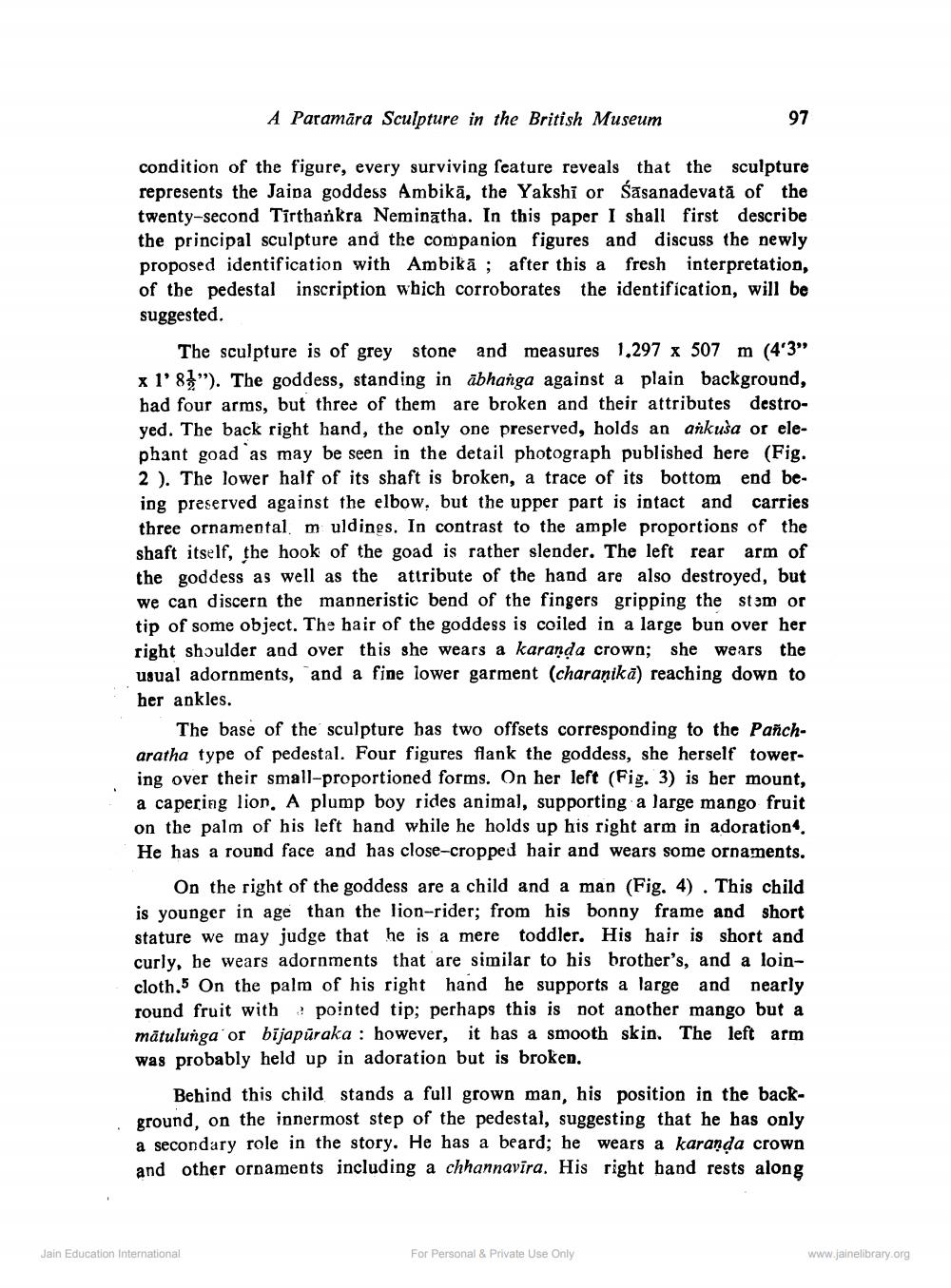________________
A Paramara Sculpture in the British Museum
condition of the figure, every surviving feature reveals that the sculpture. represents the Jaina goddess Ambika, the Yakshi or Sasanadevată of the twenty-second Tirthankra Neminatha. In this paper I shall first describe the principal sculpture and the companion figures and discuss the newly proposed identification with Ambikā; after this a fresh interpretation, of the pedestal inscription which corroborates the identification, will be suggested.
The sculpture is of grey stone and measures 1,297 x 507 m (4'3" x 18"). The goddess, standing in abhanga against a plain background, had four arms, but three of them are broken and their attributes destroyed. The back right hand, the only one preserved, holds an ankula or elephant goad as may be seen in the detail photograph published here (Fig. 2). The lower half of its shaft is broken, a trace of its bottom end being preserved against the elbow, but the upper part is intact and carries three ornamental. m uldings. In contrast to the ample proportions of the shaft itself, the hook of the goad is rather slender. The left rear arm of the goddess as well as the attribute of the hand are also destroyed, but we can discern the manneristic bend of the fingers gripping the stam or tip of some object. The hair of the goddess is coiled in a large bun over her right shoulder and over this she wears a karanda crown; she wears the usual adornments, and a fine lower garment (charanika) reaching down to her ankles.
97
The base of the sculpture has two offsets corresponding to the Pancharatha type of pedestal. Four figures flank the goddess, she herself towering over their small-proportioned forms. On her left (Fig. 3) is her mount, a capering lion, A plump boy rides animal, supporting a large mango fruit on the palm of his left hand while he holds up his right arm in adoration. He has a round face and has close-cropped hair and wears some ornaments.
On the right of the goddess are a child and a man (Fig. 4). This child is younger in age than the lion-rider; from his bonny frame and short stature we may judge that he is a mere toddler. His hair is short and curly, he wears adornments that are similar to his brother's, and a loincloth. On the palm of his right hand he supports a large and nearly round fruit with pointed tip; perhaps this is not another mango but a matulunga or bijapuraka: however, it has a smooth skin. The left arm. was probably held up in adoration but is broken.
Behind this child stands a full grown man, his position in the background, on the innermost step of the pedestal, suggesting that he has only a secondary role in the story. He has a beard; he wears a karanda crown and other ornaments including a chhannavira. His
right hand rests along
Jain Education International
For Personal & Private Use Only
www.jainelibrary.org




